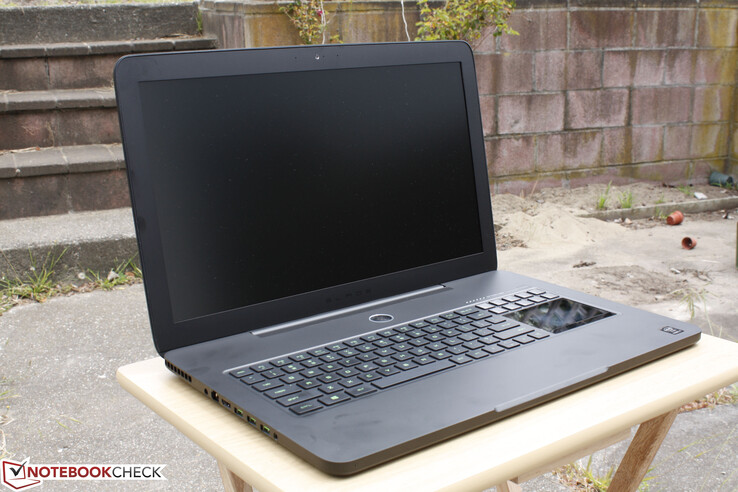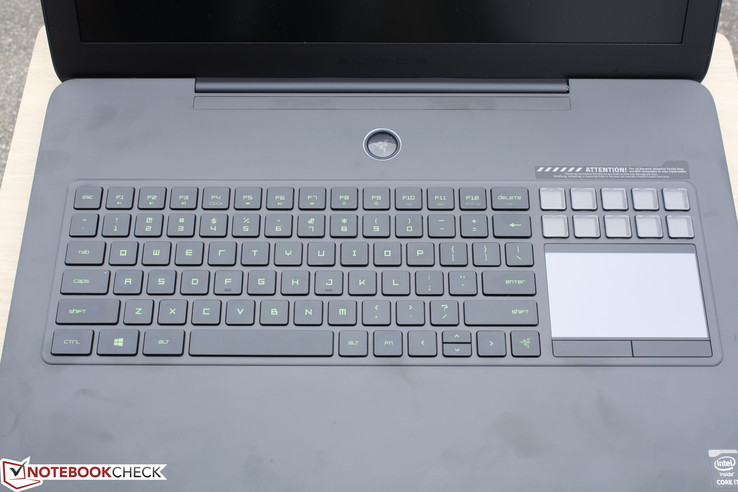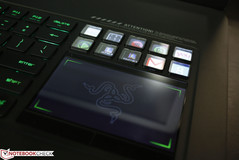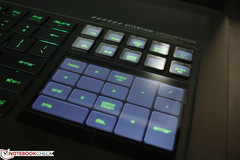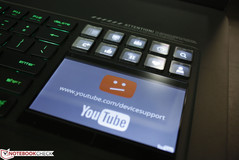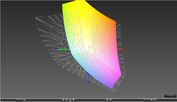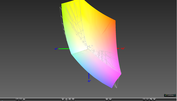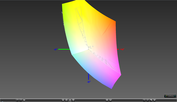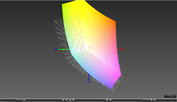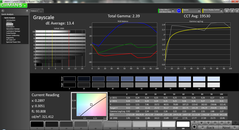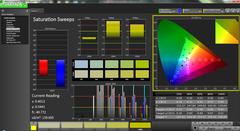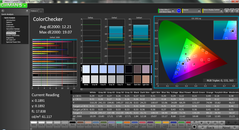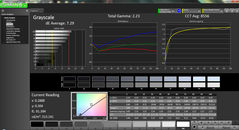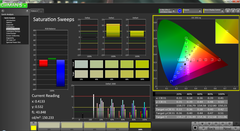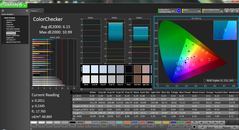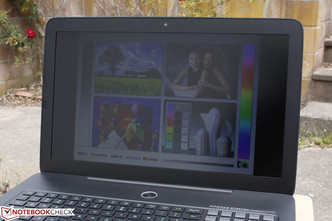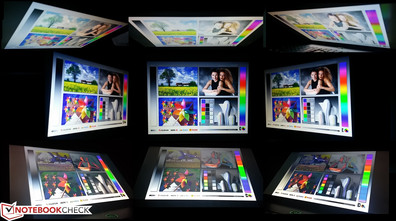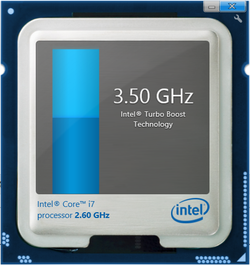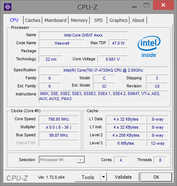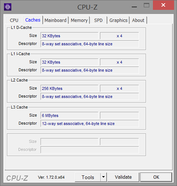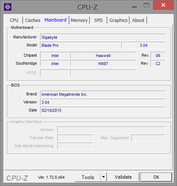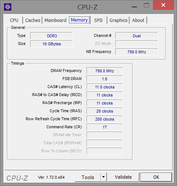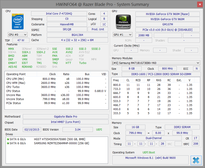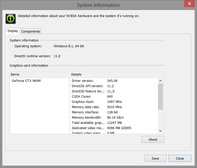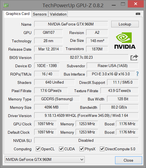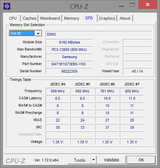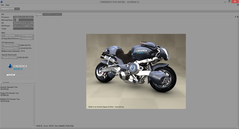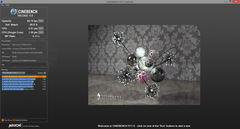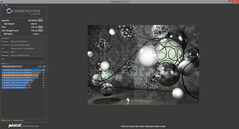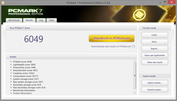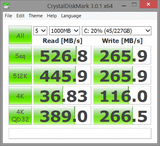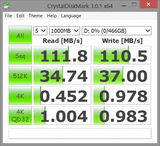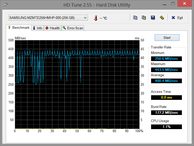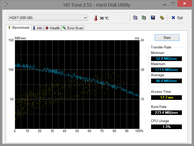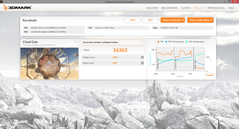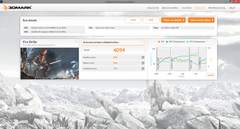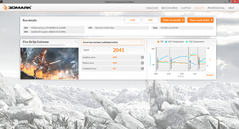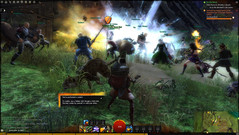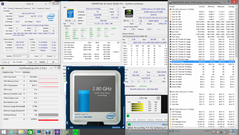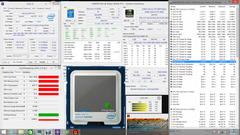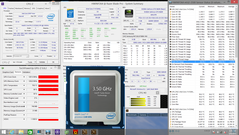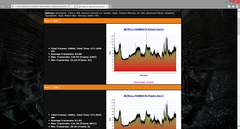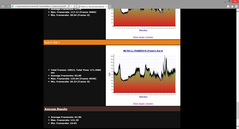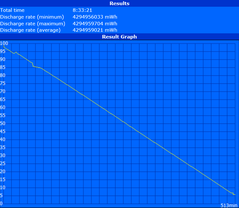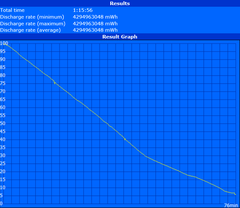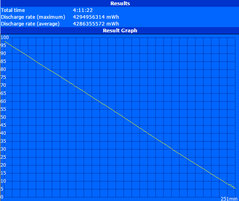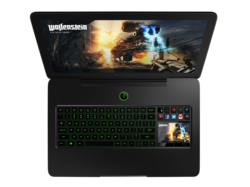Razer Blade Pro 2015 Notebook Review
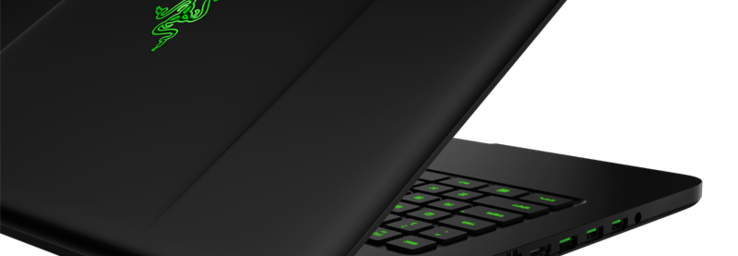
Razer needs no introduction in the gaming world. The company's wide-reaching sponsorship of major gaming events and tournaments has made its green logo as recognizable as Nvidia's. Style and performance are essentially Razer's mantra and the latest Blade Pro refresh is perhaps its best example yet.
The 2015 Blade Pro improves upon last year's model with faster internals. The Core i7-4700HQ and GTX 860M have both been bumped up to a Core i7-4720HQ and GTX 960M, respectively, while the 1080p display and signature Switchblade remains unchanged. It's worth noting that core features are not configurable; The CPU, GPU, and display are set in stone while there are a handful of SSD and secondary HDD options. Let's find out how well this Razer performs in the increasingly competitive ultrathin gaming market.
Case
The chassis is identical in material and design to the smaller Blade 14. Its sleek and smooth matte dark gray surfaces, rounded corners and edges, and minimalist appearance is as MacBook Pro-like as you can get. There really are no major negatives from a design point-of-view, which is probably why Razer has yet to introduce a complete redesign since its debut in 2011. We can say, however, that the Blade Pro openly displays its ventilation grilles whereas other ultrathins more cleverly hide them for a cleaner look, such as on the MacBook Pro and Asus G501.
In terms of quality, the aluminum case is better than most 17-inch ultrathin gaming models. Edges and corners are tough and very resistant to pressure and twists. Spots that are normally weak on larger notebooks, such as the centers of the keyboard and outer lid, are much firmer on the Blade Pro with only slight warping when pressed down. The display itself is more rigid than its thin profile would otherwise suggest while its single-bar hinge holds firmly up to its maximum ~135 degree angle. We're glad to have seen that the excellent workmanship from the Blade 14 has translated so well to a 17-inch form factor.
Compared to other superthin 17-inch gaming models, the MSI GS70 is thinner than our Razer by 0.4 mm while the Gigabyte P37X is thicker by 0.1 mm. The differences are almost insignificant to the end-user at such small levels, though this means Razer can no longer claim "World's thinnest" in its marketing. Despite this, the Blade Pro is quite hefty at just over 3 kg compared to the GS70 (2.7 kg) and P37X (2.9 kg). When compared to more "proper" 17-inch gaming notebooks like the Alienware 17 and Asus G751, the Blade Pro can be under half as thick and 1 kg lighter.
Connectivity
There will always be sacrifices made to available ports when looking at ultrathin form factors and the Blade Pro is no different. With that said, the Razer could have carried more as we're still a bit disappointed to not see DisplayPort, additional line-in options, or even a card reader. Competing utrathin models have more built-in options including additional USB ports, VGA, or dual DisplayPort as is the case with the MSI GS70. Right-handed users will enjoy the fact that all ports are relegated to the left edge of the notebook.
Communication
WiDi, Wi-Fi, and Bluetooth 4.0 are provided by an Intel Dual Band 7260 half-mini PCIe module. The 2x2 (2.4 GHz and 5 GHz) card is capable of transfer rates up to a theoretical 867 Mbps with 802.11ac, but is otherwise limited to the usual 300 Mbps on an 802.11n network. There are no Atheros Killer options for Gigabit WLAN as opposed to the MSI GS70.
GPS and WWAN features are absent as expected from a dedicated gaming notebook.
Accessories
Razer is a bit more stingy on included accessories compared to other manufacturers. This means no cleaning cloth, protective cases, and adapters or dongles. It's a bit a of a letdown especially since we just came back from reviewing the accessory-heavy Asus G501. Of course, Razer themselves sell branded accessories that are generic across their platforms.
Maintenance
Similar to the smaller 14-inch model, the bottom panel is held in place by about a dozen small Torx screws. Almost all components are integrated including the GPU and RAM as opposed to the standard MXM 3.0b and SODIMM slots common on thicker barebones. The mSATA and SATA III slots are available for swapping drives as needed.
Warranty
The standard Razer warranty is one year from date of purchase or two years with an extended coverage. Warranty options aren't as broad as say from Dell or Lenovo and certainly not as community-driven as those from Asus ROG.
Input Devices
Keyboard
It's hard to fathom that the Chiclet keyboard (27.5 x 11 cm) is almost identical in both size and layout to that of the Blade 14 despite the larger footprint of the Blade Pro. It is a compromise to make room for the Switchblade, so don't expect a better typing experience here if you find the keyboard to be too small on the 14-inch model. The keys are relatively quiet, but are a bit on the light side with shallow travel. This is especially true for the Arrow keys, which are halved in size and uncomfortable to use. Thicker models like the Asus G751 and Eurocom X8 have firmer keys and feedback overall.
The Synapse software is a bright spot for the keyboard as it offers plenty of customization, recordings, and macro options geared towards gamers. We find it very easy to use and far ahead of similar software in competing MSI or Aorus models.
Touchpad
The big attention grabber for the Blade Pro is its Switchblade UI. This 4.05-inch 800 x 480 resolution display doubles as a multi-touch touchpad with customizable macro keys and can check email, browse the Internet, play Youtube videos, and do much more. The TN panel offers a measured brightness of 192 nits. We won't bother going into detail about its specifications and features as Razer already gives a pretty good rundown.
The take-home message on the Switchblade is that it is high on potential with flat execution. Many of its built-in features like Twitter, Facebook, Internet browser, and Gmail run infinitely smoother on your existing smartphone. Videos especially play at choppy frame rates on the Switchblade. Its other main feature runs game-related Apps for displaying additional icons, movesets, and real-time game data. Supported games are sparse and the usefulness of these auxiliary keys and information will depend on the game and application. Some are actually quite handy, such as Windows 8 shortcuts and the music player, but the browser-related apps are quite poor and unresponsive. If used as standard Macro keys, the Switchblade is at a disadvantage as other gaming systems like Alienware and Aorus tend to have Macro keys nearer the left side of the keyboard for faster access.
As a standard touchpad, the Switchblade is poor. Its glossy surface results in an irregular glide (very similar to the Aorus models) and its two small click keys feel cheap with shallow travel and unsatisfying feedback. Imagine using your squeaky clean window as a touchpad and you'll have a good idea of how it feels to use the Switchblade. Fortunately, gamers are expected to use their own external mice when gaming and the Switchblade is adequate for simple navigation should an external mouse be unavailable.
Display
The 17.3-inch matte 1080p TN panel is the only option so far on the Blade Pro. There are no touchscreen, IPS, glass, or UHD options as are available on the smaller Blade 14. This may be disappointing to some users, but one can also argue that such features are inconsequential to gaming. Subjectively, image quality is clean with no major backlight bleeding. Text and images are certainly not as crisp compared to the 4K versions of the MSI GS60 and Asus G501 and the screen-door effect is apparent when looking up-close. Then again, there are currently no 17-inch 3K or 4K panels in wide circulation. Color temperature is also overly cool out-of-the-box. A quick search for the B173HW02 V1 panel name reveals a number of 17.3-inch gaming models that also sport the same display, including the Asus G750JM and Aorus X7 v2.
Display brightness is very good and more than sufficient for comfortable indoor gaming. Unfortunately, the display falters in other areas such as color accuracy and contrast as shown in our table below. We called this particular panel "second-rate" in our Aorus X7 v2 review and it stays true here, especially for the price range.
| |||||||||||||||||||||||||
Brightness Distribution: 87 %
Center on Battery: 315.5 cd/m²
Contrast: 384:1 (Black: 0.822 cd/m²)
ΔE ColorChecker Calman: 12.21 | ∀{0.5-29.43 Ø4.78}
ΔE Greyscale Calman: 13.4 | ∀{0.09-98 Ø5}
90.3% sRGB (Argyll 1.6.3 3D)
59% AdobeRGB 1998 (Argyll 1.6.3 3D)
66.8% AdobeRGB 1998 (Argyll 3D)
90.4% sRGB (Argyll 3D)
69.7% Display P3 (Argyll 3D)
Gamma: 2.39
CCT: 19530 K
| Razer Blade Pro 17 inch 2015 GeForce GTX 960M, 4720HQ, Samsung PM851 Series MZMTE256HMHP | MSI GS70-2QE16SR51 GeForce GTX 970M, 4720HQ, Toshiba HG6 THNSNJ256GMCU | Gigabyte P37X GeForce GTX 980M, 4720HQ, 2x Lite-On LMT-128L9M (RAID 0) | Acer Aspire V Nitro 7-791G-70TW GeForce GTX 960M, 4720HQ, Kingston RBU-SNS8100S3256GD | Aorus X7 Pro GeForce GTX 970M SLI, 4870HQ, 2x Lite-On LMT-256L9M (RAID 0) | Asus G751JY-T7009H GeForce GTX 980M, 4710HQ, Samsung SSD XP941 MZHPU256HCGL | |
|---|---|---|---|---|---|---|
| Display | -8% | -3% | -2% | -3% | -6% | |
| Display P3 Coverage (%) | 69.7 | 61.1 -12% | 68.7 -1% | 70.1 1% | 67.9 -3% | 66.4 -5% |
| sRGB Coverage (%) | 90.4 | 85 -6% | 87.9 -3% | 87.5 -3% | 88.7 -2% | 85.3 -6% |
| AdobeRGB 1998 Coverage (%) | 66.8 | 62.1 -7% | 64 -4% | 63.9 -4% | 64.9 -3% | 62.1 -7% |
| Screen | 28% | 30% | 35% | 28% | 36% | |
| Brightness middle (cd/m²) | 315.5 | 251 -20% | 361.7 15% | 347 10% | 318 1% | 329 4% |
| Brightness (cd/m²) | 295 | 249 -16% | 347 18% | 326 11% | 283 -4% | 326 11% |
| Brightness Distribution (%) | 87 | 84 -3% | 91 5% | 90 3% | 82 -6% | 93 7% |
| Black Level * (cd/m²) | 0.822 | 0.28 66% | 0.734 11% | 0.409 50% | 0.54 34% | 0.47 43% |
| Contrast (:1) | 384 | 896 133% | 493 28% | 848 121% | 589 53% | 700 82% |
| Colorchecker dE 2000 * | 12.21 | 11.19 8% | 2.81 77% | 6.81 44% | 3.79 69% | 3.95 68% |
| Greyscale dE 2000 * | 13.4 | 4.57 66% | 1.92 86% | 7.27 46% | 2.35 82% | 3.36 75% |
| Gamma | 2.39 92% | 2.38 92% | 2.21 100% | 2.4 92% | 2.37 93% | 2.46 89% |
| CCT | 19530 33% | 14550 45% | 6384 102% | 7546 86% | 6775 96% | 5961 109% |
| Color Space (Percent of AdobeRGB 1998) (%) | 59 | 55 -7% | 57.95 -2% | 57 -3% | 58 -2% | 56 -5% |
| Color Space (Percent of sRGB) (%) | 90.3 | |||||
| Total Average (Program / Settings) | 10% /
18% | 14% /
21% | 17% /
25% | 13% /
20% | 15% /
24% |
* ... smaller is better
Color coverage is 80 percent and 59 percent of sRGB and AdobeRGB standards, respectively. This is better than budget TN panels where 60 percent and 40 percent coverage are more common and more or less similar to current competing 17-inch gaming models. Gamut is 95 to 99 percent identical to the MSI GS70, Asus G751, and Gigabyte P37X. This has little significance for gaming purposes and is more applicable to graphics designers.
Further display analyses with a spectrophotometer reveal poor colors and grayscale. Color temperature needs to be turned down and colors tend to become less accurate the lower the saturation level. A quick display calibration alleviates these problems considerably as RGB balance, grayscale, and colors become more accurate across the board.
Outdoor visibility is average at best as larger displays require more powerful lighting for comfortable use. Glare is fortunately not an issue on the matte display, but the backlight is simply too weak to prevent washed out colors and text on a bright overcast or sunny day.
Viewing angles are good for a TN panel. We imagine that Razer opted for faster response times over the benefits of IPS, which is an about face as most newer gaming models are sporting IPS panels as standard including Razer's own Blade 14. Colors are stable here when viewing from the sides and generally from the top, while they will degrade quickly when viewing from the bottom.
Performance
The current and only configuration for the 2015 model houses a Core i7-4720HQ with GTX 960M graphics. This 47 W CPU in particular is very common amongst gaming notebooks with the more extreme MX models reserved for Eurocom and other thick barebones. The i7-4720HQ runs at its rated 2.6 GHz base speed up to 3.4 and 3.6 GHz Turbo Boost depending on the number of active cores. When idling, the Haswell and Maxwell cores will run at 800 MHz and 135/202.5 MHz core/memory, respectively, to conserve power. Optimus is supported with the integrated HD 4600 GPU for additional power savings.
Like its smaller 14-inch sibling, all RAM modules are soldered onto the board with no end-user upgradeability. The base dual-channel PC3-12800 16 GB RAM is luckily sufficient for gaming needs.
Processor
CPU performance according to synthetic benchmarks is in the same ballpark as other notebooks sporting an identical processor. In single-core benchmarks like CineBench and Super Pi, the Blade Pro lies very close to the average scores expected from an i7-4720HQ. In contrast, performance in benchmarks requiring sustained multi-core operations like CineBench R15 multi-core and wPrime is slower than the average i7-4720HQ as the Blade Pro is unable to maintain a high multi-core Turbo Boost for extended periods. This can be observed in our stress test below as well.
Raw performance is about 10 to 20 percent slower than the extreme i7-4940XM and just barely above that of the i7-4710HQ. For more technical information and benchmarks on the Core i7-4720HQ, see our dedicated page here.
| Cinebench R11.5 | |
| CPU Single 64Bit (sort by value) | |
| Razer Blade Pro 17 inch 2015 | |
| Alienware 15 | |
| Asus G501JW | |
| One M73-2N, Ivy Bridge | |
| Eurocom X8 | |
| CPU Multi 64Bit (sort by value) | |
| Razer Blade Pro 17 inch 2015 | |
| Alienware 15 | |
| Asus G501JW | |
| One M73-2N, Ivy Bridge | |
| Eurocom X8 | |
| OpenGL 64Bit (sort by value) | |
| Razer Blade Pro 17 inch 2015 | |
| Alienware 15 | |
| Asus G501JW | |
| Eurocom X8 | |
| Cinebench R15 | |
| CPU Single 64Bit (sort by value) | |
| Razer Blade Pro 17 inch 2015 | |
| Alienware 15 | |
| Asus G501JW | |
| Eurocom X8 | |
| CPU Multi 64Bit (sort by value) | |
| Razer Blade Pro 17 inch 2015 | |
| Alienware 15 | |
| Asus G501JW | |
| Eurocom X8 | |
| Ref. Match 64Bit (sort by value) | |
| Razer Blade Pro 17 inch 2015 | |
| Asus G501JW | |
| Eurocom X8 | |
| OpenGL 64Bit (sort by value) | |
| Razer Blade Pro 17 inch 2015 | |
| Alienware 15 | |
| Asus G501JW | |
| Eurocom X8 | |
| wPrime 2.10 | |
| 1024m (sort by value) | |
| Razer Blade Pro 17 inch 2015 | |
| Asus G501JW | |
| One M73-2N, Ivy Bridge | |
| Eurocom X8 | |
| 32m (sort by value) | |
| Razer Blade Pro 17 inch 2015 | |
| Asus G501JW | |
| One M73-2N, Ivy Bridge | |
| Eurocom X8 | |
| Super Pi Mod 1.5 XS 32M - 32M (sort by value) | |
| Razer Blade Pro 17 inch 2015 | |
| Asus G501JW | |
| Eurocom X8 | |
| X264 HD Benchmark 4.0 | |
| Pass 2 (sort by value) | |
| Razer Blade Pro 17 inch 2015 | |
| Alienware 15 | |
| Asus G501JW | |
| One M73-2N, Ivy Bridge | |
| Eurocom X8 | |
| Pass 1 (sort by value) | |
| Razer Blade Pro 17 inch 2015 | |
| Alienware 15 | |
| Asus G501JW | |
| One M73-2N, Ivy Bridge | |
| Eurocom X8 | |
* ... smaller is better
System Performance
PCMark benchmarks place the Blade Pro alongside other high-end gaming notebooks like the Eurocom X3 and Schenker XMG A505. This is no doubt due to the powerful components and the dedicated SSD. For comparison, our record PCMark 7 holder is the Eurocom X8 with its SLI GTX 980M at 7272 points while our Blade Pro clocks in at 6049 points. Subjectively, OS navigation and applications both run and open smoothly with almost no delays.
| PCMark 7 Score | 6049 points | |
| PCMark 8 Home Score Accelerated v2 | 3741 points | |
| PCMark 8 Creative Score Accelerated v2 | 4528 points | |
| PCMark 8 Work Score Accelerated v2 | 4448 points | |
Help | ||
Storage Devices
Dual drives are supported via a primary mSATA drive and secondary 2.5-inch SATA III drive. Models are configurable from as low as 128 GB up to 512 GB. Our test model features a 256 GB Samsung PM851 primary with a 500 GB Hitachi Travelstar Z5K500 HTS545050A7E680 for additional storage space. It's recommended to stick with 7 mm drives in order to be certain that the new drive will fit in the tight space available. Secondary storage is especially important for gaming notebooks and is thus a common feature for most models on the market. However, it's a little odd to see no RAID support for a high-end gaming notebook such as this.
Transfer rates according to CrystalDiskMark are as expected from a Samsung PM851. Performance is similar to other SATA III SSDs, though sequential write rates are a little low at 265 MB/s. Samsung's own SSD 840 EVO has sequential write rates much closer to its read rates at just above 500 MB/s. Meanwhile, the Hitachi HDD performs well with a transfer rate of 86 MB/s according to HD Tune. This is good for a 5400 RPM drive where speeds can be as low as 75 MB/s for cheaper models.
GPU Performance
Synthetic graphics benchmarks rank the GTX 960M in our Blade Pro slightly above average compared to other systems with the same GPU. This is due to the Blade Pro's good performance when under gaming loads as clock speeds do not drop dramatically from thermal or power limitations. Contrast this with the Asus G501, which is unable to maintain a constant GPU Boost under similar loads.
For more technical details and benchmarks of the GTX 960M, see our dedicated GPU page here.
| 3DMark 06 Standard Score | 25997 points | |
| 3DMark 11 Performance | 5692 points | |
| 3DMark Ice Storm Standard Score | 105900 points | |
| 3DMark Cloud Gate Standard Score | 16363 points | |
| 3DMark Fire Strike Score | 4094 points | |
| 3DMark Fire Strike Extreme Score | 2041 points | |
Help | ||
Gaming Performance
As the GTX 960M is simply a rebrand of the GTX 860M, users can expect just slightly higher performance compared to mainstream gaming notebooks of yesteryear. The performance gap between it and the lower GTX 950M is roughly 30 percent compared to 15 to 20 percent against last year's GTX 860M. However, the gap is even larger when compared to the GTX 970M as even Razer's own Blade 14 outperforms the larger Blade Pro by 50 to 60 percent on high graphics settings. Nonetheless, most of today's titles will be playable on Ultra 1080p settings at 30 FPS, though the GTX 960M will start to buckle on more demanding games.
| low | med. | high | ultra | |
|---|---|---|---|---|
| Sleeping Dogs (2012) | 93.1 | 24.3 | ||
| Guild Wars 2 (2012) | 62.6 | 36 | ||
| Tomb Raider (2013) | 113.2 | 50.8 | ||
| StarCraft II: Heart of the Swarm (2013) | 127.8 | 55.1 | ||
| BioShock Infinite (2013) | 120 | 46.8 | ||
| Metro: Last Light (2013) | 61.9 | 32.2 | ||
| Thief (2014) | 54.1 | 28.3 | ||
| Middle-earth: Shadow of Mordor (2014) | 40.1 | 31 | ||
| Ryse: Son of Rome (2014) | 30.5 | 28.2 | ||
| F1 2014 (2014) | 113 | 94 |
| Tomb Raider | |
| 1920x1080 Ultra Preset AA:FX AF:16x (sort by value) | |
| Razer Blade Pro 17 inch 2015 | |
| Lenovo Y70 DU004HUS | |
| Schenker M505 | |
| Razer Blade 14 2015 | |
| Gigabyte P37X | |
| 1366x768 High Preset AA:FX AF:8x (sort by value) | |
| Razer Blade Pro 17 inch 2015 | |
| Lenovo Y70 DU004HUS | |
| Schenker M505 | |
| Razer Blade 14 2015 | |
| Gigabyte P37X | |
| 1366x768 Normal Preset AA:FX AF:4x (sort by value) | |
| Schenker M505 | |
| 1024x768 Low Preset (sort by value) | |
| Schenker M505 | |
| Sleeping Dogs | |
| 1920x1080 Extreme Preset AA:Extreme (sort by value) | |
| Razer Blade Pro 17 inch 2015 | |
| Lenovo Y70 DU004HUS | |
| Razer Blade 14 2015 | |
| Gigabyte P37X | |
| 1366x768 High Preset AA:High (sort by value) | |
| Razer Blade Pro 17 inch 2015 | |
| Lenovo Y70 DU004HUS | |
| Razer Blade 14 2015 | |
| Gigabyte P37X | |
| Guild Wars 2 | |
| 1920x1080 All Maximum / On AA:FX (sort by value) | |
| Razer Blade Pro 17 inch 2015 | |
| Lenovo Y70 DU004HUS | |
| Razer Blade 14 2015 | |
| Gigabyte P37X | |
| 1366x768 Best Appearance Preset AA:FX (sort by value) | |
| Razer Blade Pro 17 inch 2015 | |
| Lenovo Y70 DU004HUS | |
| Razer Blade 14 2015 | |
| Gigabyte P37X | |
| StarCraft II: Heart of the Swarm | |
| 1920x1080 Ultra / Extreme AA:on (sort by value) | |
| Razer Blade Pro 17 inch 2015 | |
| Lenovo Y70 DU004HUS | |
| Razer Blade 14 2015 | |
| Gigabyte P37X | |
| 1366x768 High AA:on (sort by value) | |
| Razer Blade Pro 17 inch 2015 | |
| Lenovo Y70 DU004HUS | |
| Razer Blade 14 2015 | |
| Gigabyte P37X | |
| BioShock Infinite | |
| 1920x1080 Ultra Preset, DX11 (DDOF) (sort by value) | |
| Razer Blade Pro 17 inch 2015 | |
| Lenovo Y70 DU004HUS | |
| Schenker M505 | |
| Razer Blade 14 2015 | |
| Gigabyte P37X | |
| 1366x768 High Preset (sort by value) | |
| Razer Blade Pro 17 inch 2015 | |
| Lenovo Y70 DU004HUS | |
| Schenker M505 | |
| Razer Blade 14 2015 | |
| Gigabyte P37X | |
| 1366x768 Medium Preset (sort by value) | |
| Schenker M505 | |
| 1280x720 Very Low Preset (sort by value) | |
| Schenker M505 | |
| Metro: Last Light | |
| 1920x1080 Very High (DX11) AF:16x (sort by value) | |
| Razer Blade Pro 17 inch 2015 | |
| Lenovo Y70 DU004HUS | |
| Schenker M505 | |
| Razer Blade 14 2015 | |
| Gigabyte P37X | |
| 1366x768 High (DX11) AF:16x (sort by value) | |
| Razer Blade Pro 17 inch 2015 | |
| Lenovo Y70 DU004HUS | |
| Schenker M505 | |
| Razer Blade 14 2015 | |
| Gigabyte P37X | |
| 1366x768 Medium (DX10) AF:4x (sort by value) | |
| Schenker M505 | |
| 1024x768 Low (DX10) AF:4x (sort by value) | |
| Schenker M505 | |
| Thief | |
| 1920x1080 Very High Preset AA:FXAA & High SS AF:8x (sort by value) | |
| Razer Blade Pro 17 inch 2015 | |
| Lenovo Y70 DU004HUS | |
| Schenker M505 | |
| Razer Blade 14 2015 | |
| Gigabyte P37X | |
| 1366x768 High Preset AA:FXAA & Low SS AF:4x (sort by value) | |
| Razer Blade Pro 17 inch 2015 | |
| Lenovo Y70 DU004HUS | |
| Schenker M505 | |
| Razer Blade 14 2015 | |
| Gigabyte P37X | |
| 1366x768 Normal Preset AA:FX (sort by value) | |
| Schenker M505 | |
| 1024x768 Very Low Preset (sort by value) | |
| Schenker M505 | |
| Middle-earth: Shadow of Mordor | |
| 1920x1080 Ultra Preset (HD Package) (sort by value) | |
| Razer Blade Pro 17 inch 2015 | |
| Schenker M505 | |
| Razer Blade 14 2015 | |
| Gigabyte P37X | |
| 1920x1080 High Preset (sort by value) | |
| Razer Blade Pro 17 inch 2015 | |
| Schenker M505 | |
| Razer Blade 14 2015 | |
| Gigabyte P37X | |
| 1344x756 Medium Preset (sort by value) | |
| Schenker M505 | |
| 1280x720 Lowest Preset (sort by value) | |
| Schenker M505 | |
| Ryse: Son of Rome | |
| 1920x1080 Very High Texture Res. + High Graphics Quality (Motion Blur & Temporal AA On, Rest Off/Disabled) AF:8x (sort by value) | |
| Razer Blade Pro 17 inch 2015 | |
| Schenker M505 | |
| Razer Blade 14 2015 | |
| Gigabyte P37X | |
| 1920x1080 High Texture Res. + High Graphics Quality (Rest Off/Disabled) AF:8x (sort by value) | |
| Razer Blade Pro 17 inch 2015 | |
| Lenovo Y70 DU004HUS | |
| Schenker M505 | |
| Razer Blade 14 2015 | |
| Gigabyte P37X | |
| 1366x768 Medium Texture Res. + Normal Graphics Quality (Rest Off/Disabled) AF:4x (sort by value) | |
| Lenovo Y70 DU004HUS | |
| Schenker M505 | |
| 1024x768 Low Texture Res. + Low Graphics Quality (Rest Off/Disabled) AF:2x (sort by value) | |
| Schenker M505 | |
| F1 2014 | |
| 1920x1080 Ultra Preset AA:4x MS (sort by value) | |
| Razer Blade Pro 17 inch 2015 | |
| Lenovo Y70 DU004HUS | |
| Schenker M505 | |
| Razer Blade 14 2015 | |
| Gigabyte P37X | |
| 1920x1080 High Preset (sort by value) | |
| Razer Blade Pro 17 inch 2015 | |
| Lenovo Y70 DU004HUS | |
| Schenker M505 | |
| Razer Blade 14 2015 | |
| Gigabyte P37X | |
| 1366x768 Medium Preset (sort by value) | |
| Schenker M505 | |
| 1024x768 Ultra Low Preset (sort by value) | |
| Schenker M505 | |
Stress Test
We stress the Blade Pro with synthetic benchmarks to observe for any throttling or stability issues. With only Prime95 active, the CPU can be seen running at its rated 3.4 GHz maximum before falling to a steady 2.8 GHz in a matter of seconds when CPU temperature reaches ~85 C. While this is still 200 MHz above its base clock speed, it reveals a weaker Turbo Boost than what the Core i7-4720HQ is capable of. Core temperature holds steady at the 75 to 80 C range.
With only FurMark active, the dGPU will start as high as 1110 MHz before steadily dropping to a steady 1084 MHz according to GPU-Z. While this is a bit less than the 1097 MHz base speed, the Blade Pro does quite well as it never dips below 1084 MHz even under these extreme stress conditions. This is compared to the Asus G501, which can frequently dip to the 800 MHz range when running the same benchmark. GPU temperature plateaus at about 80 C.
When under both Prime95 and FurMark stress simultaneously, the Blade Pro holds up quite well with no major throttling issues. The Nvidia core remains steady at 1084 MHz while the CPU drops just a hair to 2.7 GHz. CPU and GPU temperatures are firmly in the 80 to 85 C range.
For more realistic gaming stress conditions, we run Unigine Heaven 4.0 and observe for any discrepancies in performance. The Blade Pro runs well under pressure from both Prime95 and FurMark, so we expect it to do even better under Unigine Heaven. This is exactly the case as both the CPU and GPU run consistently at higher Boost speeds. The GPU in particular runs at a constant 1201 MHz throughout the run, while the CPU can be as high as 3.6 GHz for brief periods depending on the demand.
Throttling under gaming stress is a non-issue. To test this, we run the Metro: Last Light benchmark consecutively ten times in a row to compare average frame rates between each run. If heavy throttling should occur, we should see declining frame rates after each run. This fortunately does not happen on the Razer as the average frame rate on run #1 is identical to run #10. For comparison, the Gigabyte P34W experiences a notable decline in performance under the same benchmarking conditions.
Running on battery power will reduce CPU performance significantly while the GPU is unaffected. A quick 3DMark 11 run on batteries results in Physics and Graphics scores of 5669 and 5546 points, respectively, compared to 8016 and 5397 points when connected to an AC adapter. This is because the processor core drops to only 1.7 GHz if not connected to mains in favor of preserving GPU performance. It's an uncommon feature as most notebooks normally reduce both CPU and GPU clock speeds with no bias.
Emissions
System Noise
The dual 50 mm fans are always active, but very quiet when on on the Power Saver profile. Thus, any browsing, email, or word processing tasks are best done in Power Saver if noise is an issue. Fan noise will periodically increase to the 33 dB(A) range if on the Balanced profile with active dGPU. It's worth noting that the individual fans can operate independently; A high GPU load will cause the right side of the notebook to become louder while a high CPU load will affect the left side.
The system can be as loud as 46 dB(A) if under maximum CPU and GPU stress, which is a common range for Ultrabooks and much less than the GS70 or P37X where their maximums can reach over 50 dB(A). Under more typical gaming conditions, however, the Blade Pro will run in the 38 to 42 dB(A) range. This makes the Razer more similar to the Asus G501 rather than the noisier models from MSI and Gigabyte.
Noise level
| Idle |
| 30.6 / 30.7 / 32.6 dB(A) |
| Load |
| 38.8 / 46.2 dB(A) |
 | ||
30 dB silent 40 dB(A) audible 50 dB(A) loud |
||
min: | ||
Temperature
Surface temperatures when idling on Power Saver are low with no obvious hot spots. When under high stress for extended periods, we were able to record temperatures as high as 45 C. Luckily, much of the excess heat is on the bottom of the notebook and towards the rear. The temperature gradient is relatively smooth because of the symmetrical fans and heat pipes as opposed to systems with only a single fan, such as the older MSI GT70 or GT60. The WASD, palm rests, and touchpad areas will be warm for potentially sweaty palms.
Compared to other 17-inch ultrathins, the Blade Pro runs slightly cooler. The Acer V17 Nitro is better at concentrating its waste heat around a single quadrant as it avoids the use of long heat pipes, while the MSI GS70, Gigabyte P37X, and Aorus X7 Pro run much warmer than our Razer with surface temperatures easily reaching over 50 C. These latter models do sport faster GPUs with higher TDP, however, so the Razer is at a temperature advantage largely because of its GPU power disadvantage.
(±) The maximum temperature on the upper side is 44.6 °C / 112 F, compared to the average of 40.4 °C / 105 F, ranging from 21.2 to 68.8 °C for the class Gaming.
(-) The bottom heats up to a maximum of 45.2 °C / 113 F, compared to the average of 43.3 °C / 110 F
(+) In idle usage, the average temperature for the upper side is 23.8 °C / 75 F, compared to the device average of 33.9 °C / 93 F.
(+) The palmrests and touchpad are reaching skin temperature as a maximum (32.4 °C / 90.3 F) and are therefore not hot.
(-) The average temperature of the palmrest area of similar devices was 28.9 °C / 84 F (-3.5 °C / -6.3 F).
Speakers
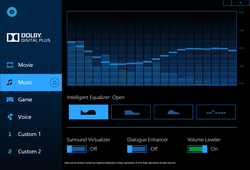
The stereo speakers provide good sound for the size, though the lack of a subwoofer results in a shallow range that could have really benefited from additional bass. Larger gaming notebooks have the luxury of potentially larger speakers and dedicated subwoofers for more depth. For what it's worth, the speakers here are clear and loud with no static at high volume settings.
The Dolby Digital Plus software has the usual equalizer and preset settings. Available options aren't as deep as the Sound Blaster X-Fi MB3 solution found on certain Clevo models. 7.1 Surround is supported through HDMI like on most multimedia notebooks.
Battery Life
The non-removable 74 Wh Li-Ion polymer battery is standard size for 17-inch gaming notebooks. Certain models have even larger capacities such as the 96 Wh modules in the Alienware 17 and Asus G501.
Runtimes are very good on the Blade Pro with a high maximum of 8.5 hours on Power Saver and the lowest brightness setting. Users can expect a more realistic 4 hour runtime on the Balanced profile and a ~150 nit brightness (setting 5/10), but this should be notably longer if on Power Saver mode instead. Note that gaming performance and system noise will decrease further if battery capacity is 30 percent or less. This feature can be toggled in the Intel Graphics Properties menu.
| Razer Blade Pro 17 inch 2015 | MSI GS70-2QE16SR51 | Gigabyte P37X | Acer Aspire V Nitro 7-791G-70TW | Aorus X7 Pro | Asus G751JY-T7009H | |
|---|---|---|---|---|---|---|
| Battery runtime | -32% | -1% | -19% | -29% | -20% | |
| Reader / Idle (h) | 8.6 | 5.1 -41% | 5.5 -36% | 3 -65% | 4.5 -48% | |
| WiFi v1.3 (h) | 4.2 | 4 -5% | 3.4 -19% | |||
| Load (h) | 1.3 | 1 -23% | 1.8 38% | 1.4 8% | 1.4 8% | |
| WiFi (h) | 3.5 | 3.7 |
Pros
Cons
Verdict
As a concept, we love the Razer Blade Pro. It's a laser-focused gaming notebook with hardware, style, and performance front and center. The metal chassis is surprisingly still excellent after all these years and more rigid than the competition. Meanwhile, GPU performance doesn't buckle under stress as may happen on other gaming notebooks with thermal or power issues.
But for every positive there is an odd negative that has us wondering why these problems have yet to be addressed. Ports and connections (no SD reader or dual video-out) are less than what competing models offer. The GPU option is a lowly GTX 960M when we know that the Blade Pro is capable of much more. Even the 14-inch Blade 14 performs spectacularly with a more powerful GTX 970M. The Switchblade is fun and novel, but it is a poor touchpad and ultimately feels like a smartphone from 2007 in dire need of an upgrade. We can imagine a potential Switchblade 2.0 being more useful and much faster with haptic feedback in the future.
The TN display itself is good, though we can't help but to expect more from this price range. Colors and grayscale are poor out-of-the-box and we recommend a calibration for the best possible picture. High-end resellers like Eurocom offer pre-calibration options and we would like to see the same from Razer.
With no higher GPU option available for now, the smaller and much more powerful Blade 14 is an easier and better recommendation for those looking to own a Razer system.
For a starting price of $2100, we want a gaming notebook with long legs and lasting performance. While we have no doubt that the Blade Pro hardware is of top quality, the GTX 960M and aging Switchblade will have a tougher time in the long run. With no higher GPU option available for now, the smaller and much more powerful Blade 14 is an easier and better recommendation for those looking to own a Razer system. Here's hoping that a redesign is in the works for the Blade Pro.
Razer Blade Pro 17 inch 2015
- 05/13/2015 v4 (old)
Allen Ngo




